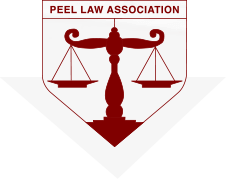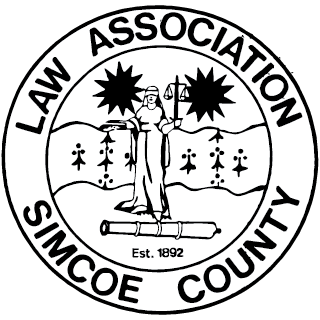Legal Recognition of Establishing Parentage
A child’s birth is registered in Ontario is under the Vital Statistics Act. Section 9(1) of the Act requires the mother and the father, or either of them, to certify the child’s birth within 30 days of the child being born. Normally, this registration is an uncomplicated matter as the child’s biological parents are his or her intended parents as well and, hence, the child’s birth certificate reflects his or her actual reality. In the 21st century, however, the assumption that biological parents are automatically the intended parents does not hold true. Gay, lesbian and heterosexual couples and individuals are all availing themselves of reproductive technologies and becoming parents. But does the law recognize them as such?
In Ontario, legally establishing parentage is done through the framework of the Children’s Law Reform Act. Part II of the Act sets out who is presumed to be the father. It also provides the scheme whereby a person can make an application for a declaration that he or she is the father or mother of the child. This is where things get interesting.
R. (J.) v. H. (L.), 2002 CarswellOnt 3445 (Ont. S.C.J.) considered parentage in the context of a gestational carriage agreement. JR and JK (the applicants) entered into gestational carriage agreement with LH because JR could not have children. The respondents in the court case were LH and her husband GH. LH gave birth to twins who were the biological children of JR and JK. After LH gave birth to twins, she and GH would normally have been recorded as the twins’ parents, in accordance with the Vital Statistics Act. However, the birth of the twins was not registered, and the parties, who were amicable, came to court to resolve parentage instead. JR and JK brought an application for a declaration that they were biological parents of the twins, for a declaration that LH and GH were not the children’s parents and for an order directing the Registrar General to issue a Statement of Birth reflecting these facts. Kitely J. granted the application. Since DNA tests clearly showed that JR and JK were the genetic parents of the twins, they were entitled to be “recognized in law” as the twins’ father and mother. The Children’s Law Reform Act was silent on the ability of the court to make a negative declaration (i.e. GH is not the father and LH is not the mother). Hence, Kitely J. found that section 97 of the Courts of Justice Act did permit negative declarations, since the twins’ parentage was of such great importance.
In D. (M.) v L. (L.) 52 R.F.L. (6th) 122 (S.C.J.), a similar case, applicants MD and JD entered in gestational carriage agreement with family friends LL and IL. When LL gave birth to child ED, she was required to place her name as “mother” on the Statement of Live Birth, notwithstanding the gestational carriage agreement and the fact that MD and JD were ED’s genetic parents. MD and JD brought a motion for a declaration that they were the parents of the child, that LL and IL were not ED’s parents and for an order directing Deputy Registrar to amend child’s birth registration. Nelson J. found that the court had the jurisdiction to deal with the issue pursuant to the Children’s Law Reform Act which does not define parentage solely on the basis of biology, and also pursuant to section 97 of the Courts of Justice Act. MD and JD were declared to be ED’s parents. The Registrar was required to amend the registration of birth to show MD and JD as the parents of E.D.
In another noteworthy case, Ontario courts have issued a parental declaration in favour of a single father who used his sperm to fertilize an ovum from an anonymous donor which was then carried to term by a surrogate mother. In D. (K.G.) v. P. (C.A.), 2004 CarswellOnt 8819 (Ont. S.C.J.) a single gay man, K.G.D., was declared to be the child T.E.D.’s father issue pursuant to the Children’s Law Reform Act. T.E.D.’s birth registration was ordered amended so as to show K.G.D. as the sole parent, with no mention of the surrogate mother, C.A.P. This registration was consistent with the actual realities of the situation: C.A.P. was a gestational carrier. S
Lastly, in a case with a different wrinkle, the Ontario Court of Appeal allowed three parents to be registered on a birth certificate. In A. (A.) v. B. (B.), 2007 CarswellOnt 2 (Ont. C.A.), a five-year-old boy, D, had three parents: his biological father B, his biological mother C, and C’s partner, A. A and C had been in a stable same-sex union for nine years before deciding to start a family with the sperm-donor assistance of their friend B. A came to court and sought a declaration that, like B and C, she was D’s parent. Specifically, she sought a declaration that she was D’s mother, along with C. The lower court judge held that he had no jurisdiction under the Children’s Law Reform Act to make the requested order, and that the court could not use its parens patriae jurisdiction to make the declaration. The Court of Appeal allowed the appeal and granted the declaration, with the effect that D now has two mothers and one father. The Court of Appeal’s comments on the importance of a declaration of parentage are of note:
“A.A., B.B. and C.C. seek to have A.A.’s motherhood recognized to give her all the rights and obligations of a custodial parent. Legal recognition of her relationship with her son would also determine other kindred relationships. In their very helpful factums, the M.D.R. intervenors and the Children’s Lawyer summarize the importance of a declaration of parentage from the point of view of the parent and the child:
Perhaps one of the greatest fears faced by lesbian mothers is the death of the birth mother. Without a declaration of parentage or some other order, the surviving partner would be unable to make decisions for their minor child, such as critical decisions about health care: see M.D.R. at para. 220. As the M.D.R. Intervenors say: “A declaration of parentage provides practical and symbolic recognition of the parent-child relationship.”
The Court also made the following insightful comments on the changing nature of who is a parent:
“I return to the earlier discussion of the intention of the CLRA. The legislation was not about the status of natural parents but the status of children. The purpose of the legislation was to declare that all children should have equal status. At the time, equality of status meant recognizing the equality of children born inside and outside of marriage. The Legislature had in mind traditional unions between one mother and one father. It did not legislate in relation to other types of relationships because those relationships and the advent of reproductive technology were beyond the vision of the Law Reform Commission and the Legislature of the day… Present social conditions and attitudes have changed. Advances in our appreciation of the value of other types of relationships and in the science of reproductive technology have created gaps in the CLRA‘s legislative scheme. Because of these changes the parents of a child can be two women or two men. They are as much the child’s parents as adopting parents or “natural” parents. The CLRA, however, does not recognize these forms of parenting and thus the children of these relationships are deprived of the equality of status that declarations of parentage provide.”
The A. (A.) v. B. (B.) decision was 5 years ago. Hopefully, our courts will keep up with the times and the ever changing nature of the Canadian family especially when establishing parentage.













